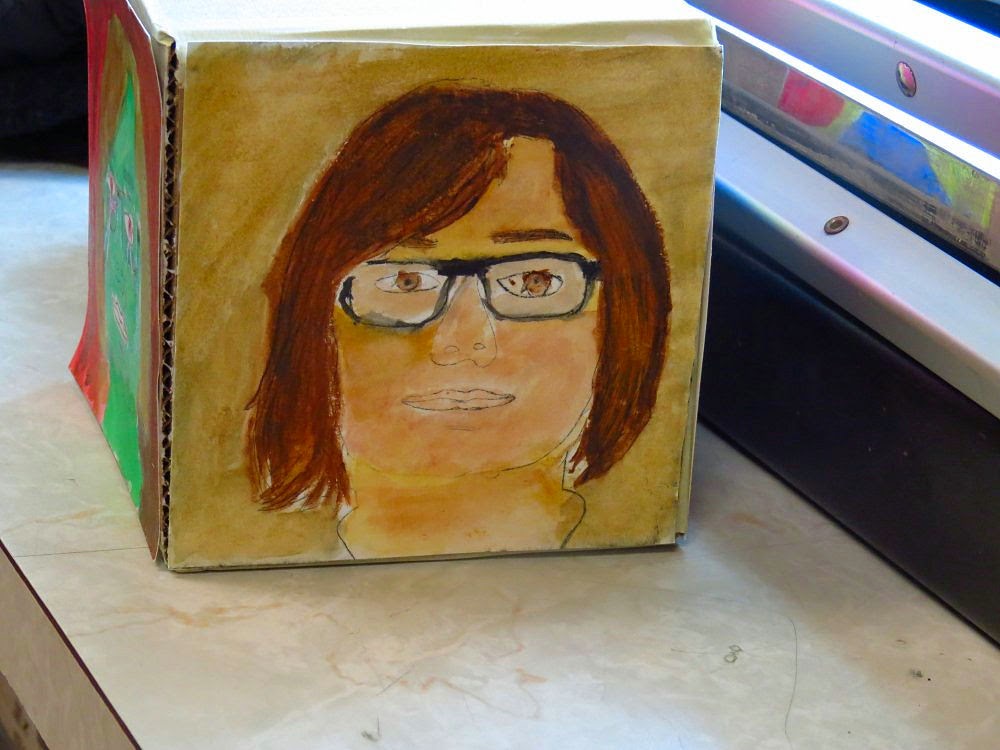grade four student painting his low relief study relating to undersea life
I finally collected up and have put together a public display of completed artwork from two classrooms I visited from April/May at St. James Public School here in Thunder Bay.
This is being hosted by the Waverley Library in our cities northcore business district.
The first display is a collection of 19 mix-media works created by senior kindergarten and grade one students from the classroom of D. Madunic. They used drawing, painting, collage, stamping to explore a regional geographic feature known as the Sleeping Giant. We started by drawing shapes and working out a composition on paper board.
pencil sketch on board
applying the paint
The next step was to apply colour and texture into the drawing using paint. I asked them to think about animals and plants that might be found around the region and put some of these into the studies. Paper shapes were cut out and glued onto the board. Finally they drew plants and animals into soft foam plates which had been attached to cut squares of cardboard. Water based relief printing ink was rolled onto the foam and these were stamped strategically into areas of their storyboard.
This project worked well as it had them continuously engaged in hands-on activity during each visit.
In expensive all media paper board was used as the surface onto which the artwork was translated onto.
I had originally intended for them to apply some low relief sculpting medium to the boards, but these ended up as a side project since many of these were too heavy to attach onto the boards.
The second project was with the grade 3/4 classroom of teacher
D. Mayotte. Her students paired mental imagery from a choice of four poems they had recently read with three dimensional low relief paintings on panel.
Students drew sketches in pencil on paper. These papers with drawings were glued onto precut masonite panels. Using air dry sculpting medium they built up shapes on the panel using the sketch as their template. The sculpting medium as bonded to the panel surface using white glue and brushes.
Once these were set acrylic paint was applied to both the low relief shapes and the background. Finally the students wrote short statements to accompany each of their paintings.














































.JPG)





